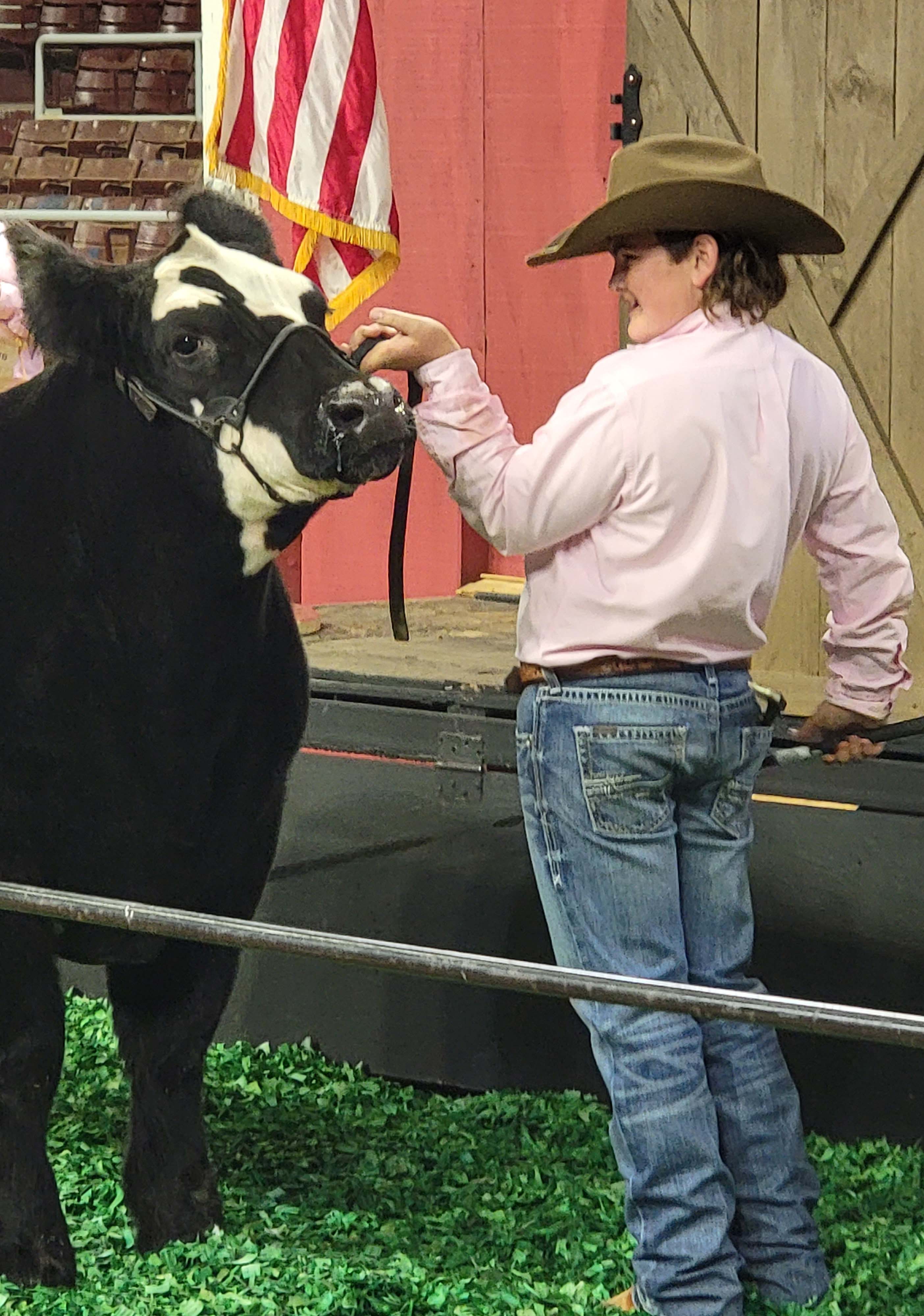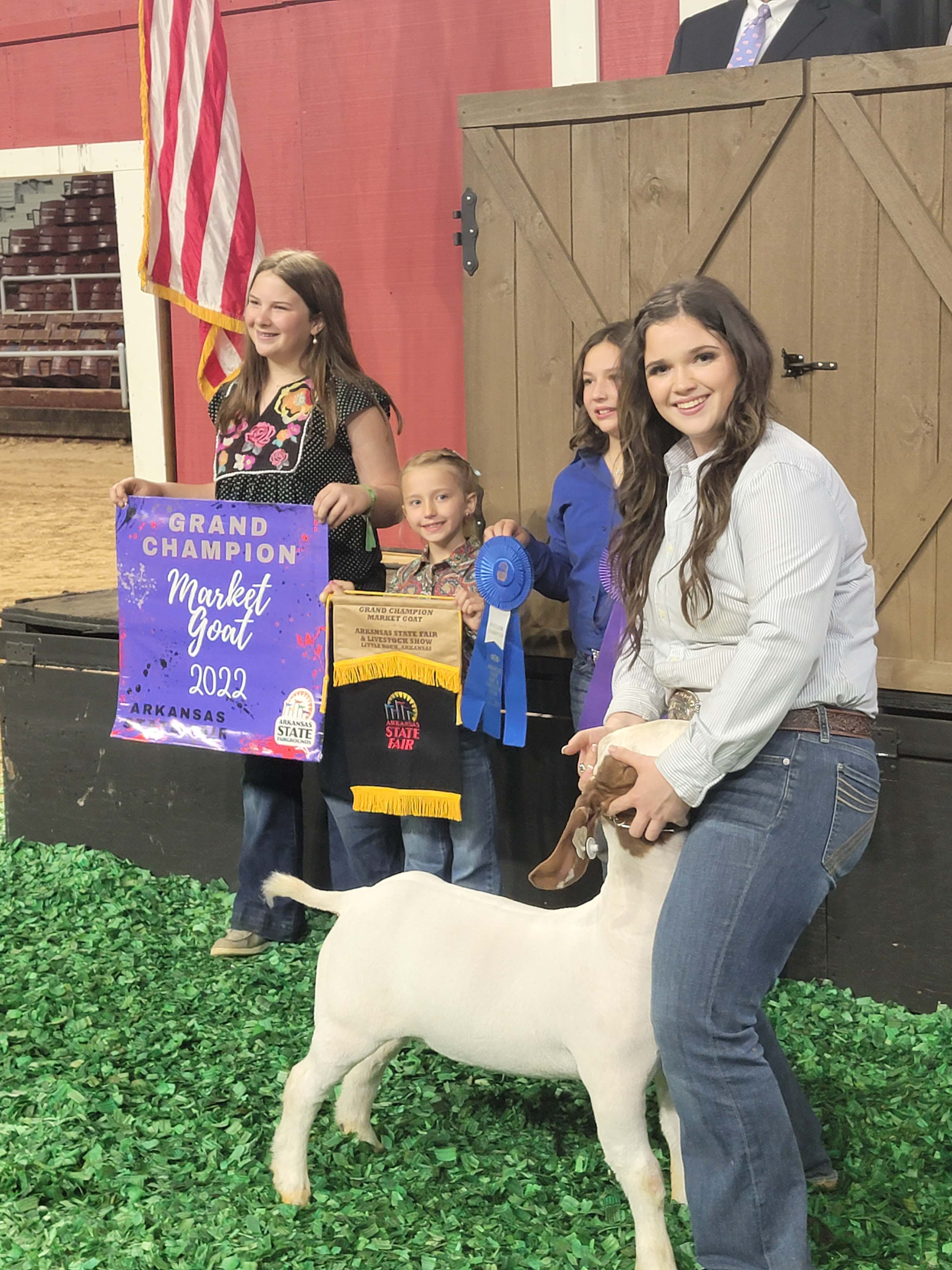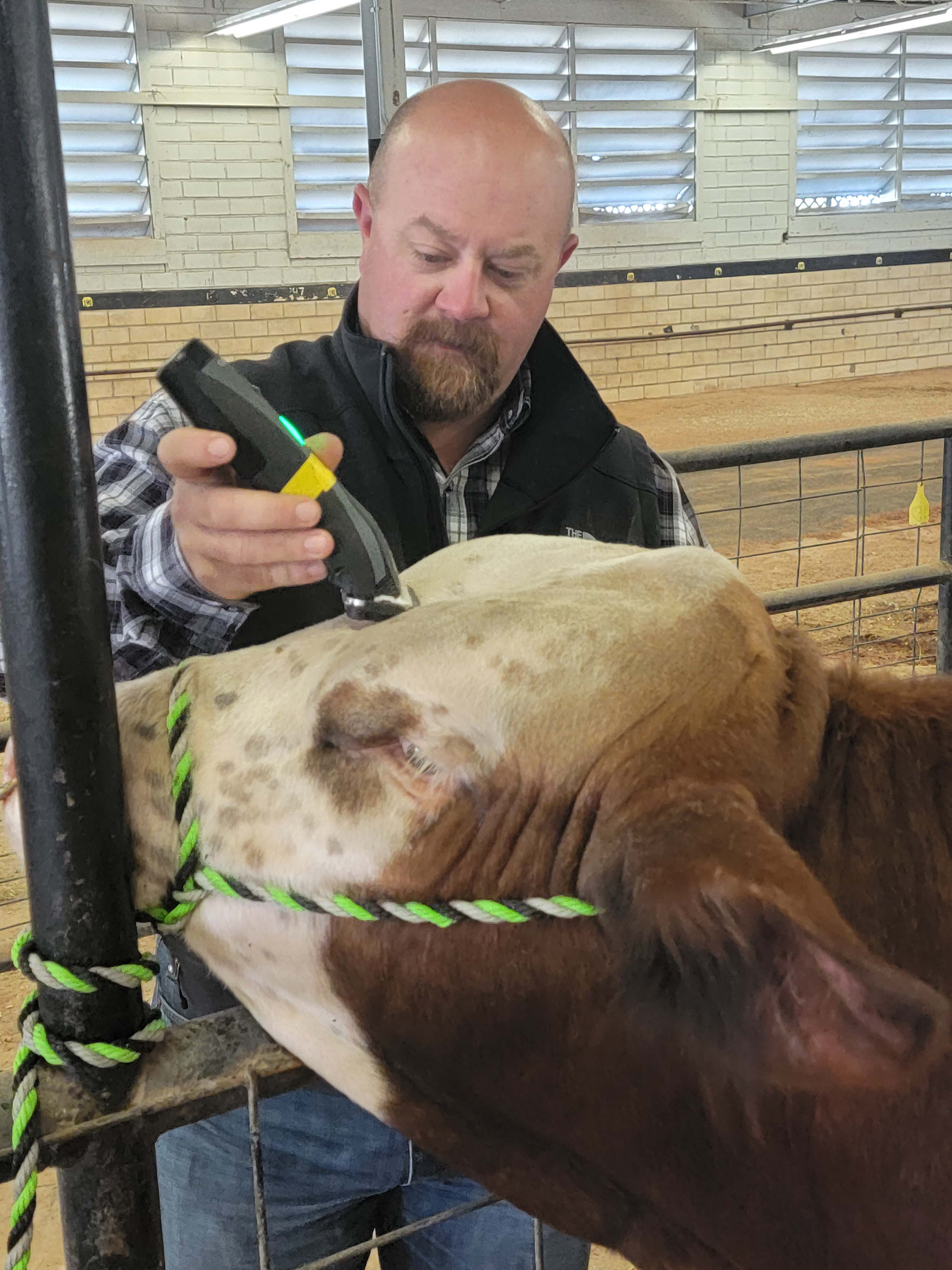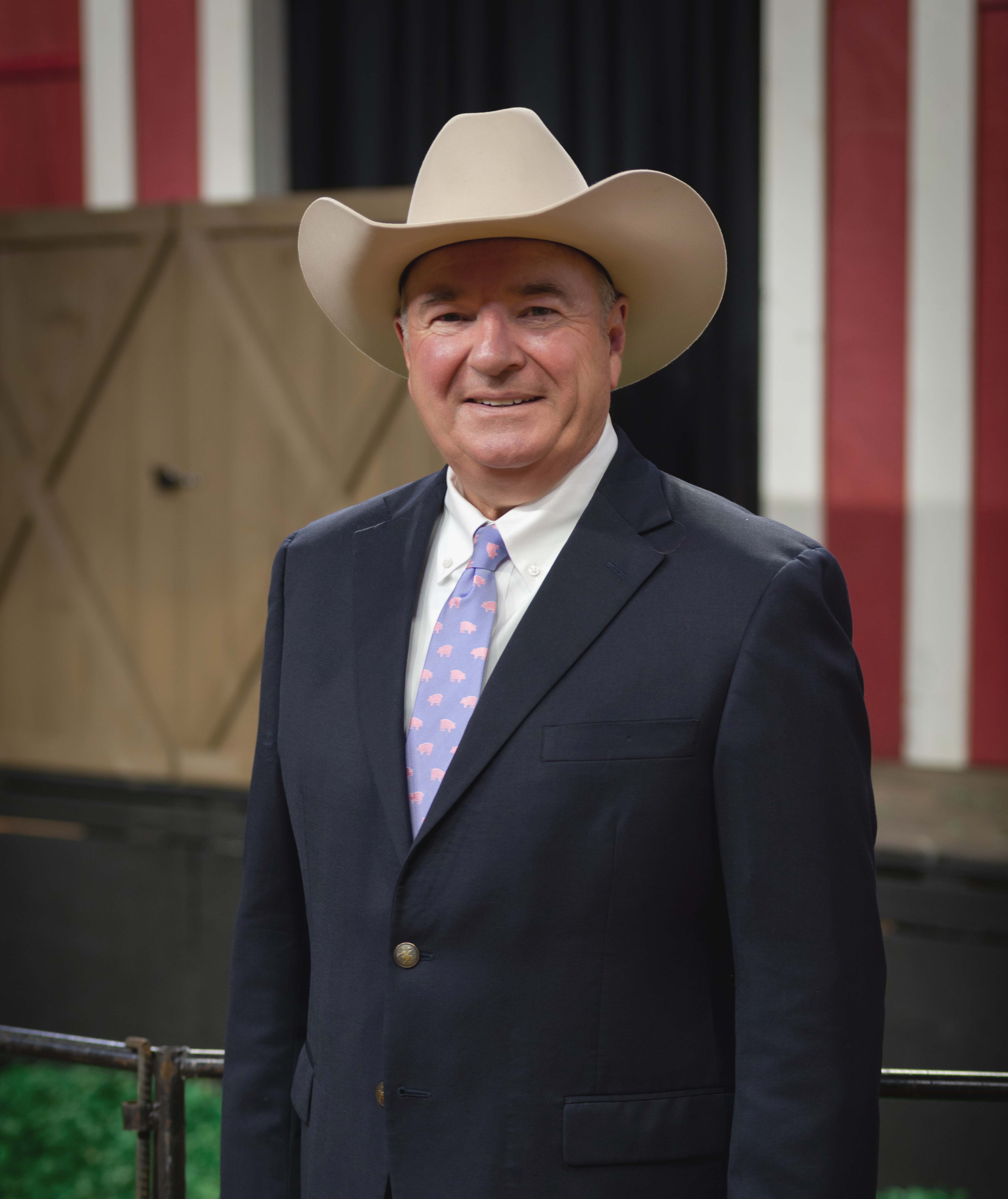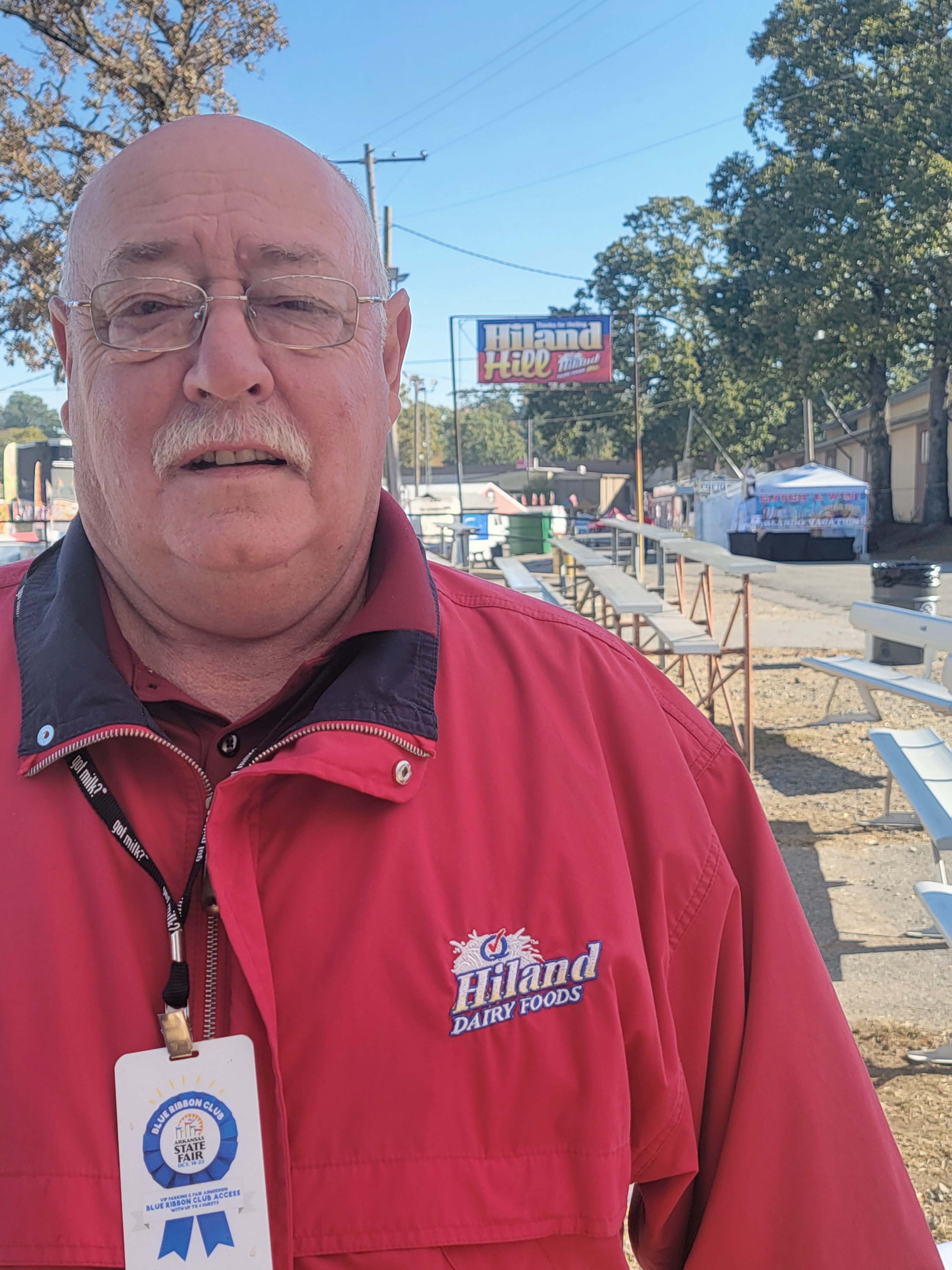Arkansas State Fair: Thrives and Drives Economic Growth Statewide
October 31 - November 6, 2022
By Dwain Hebda
Justin Allen of Dierks stands in one of the cavernous barns on the last sleepy Saturday of the 2022 Arkansas State Fair. The sun-streaked morning air is silent, except for the buzz of his clippers and the occasional clank of his bull’s giant brass nose ring against the steel stall panel.
A few days ago, this space was teeming with cattle and noise as owners and handlers prepared to show and fairgoers by the hundreds passed by. But as the Fair and its livestock competitions have wound down, many of the competitors have packed up and headed home to farms and ranches throughout the state. Allen, and the massive bull he’s trimming up before showing, are two of only six creatures remaining in the barn.
Allen is typical of the livestock show families that return like migrating geese to the Arkansas State Fair every year – a small, independent cattleman whose kids grow up caring for and showing animals at the county and, God willing, state levels of competition. The clan also makes the rounds to livestock shows in the region, leading their animals in front of judges in the hopes of landing the top prize.
For Allen’s two kids winning a ribbon, and in some cases a modest cash award, is the ultimate payoff for months of hard work. But there’s another perk that rides shotgun with a winning animal, one that can potentially impact the family’s bottom line substantially.
A Grand Champion title means just that — several grand in fact, as in thousands more Allen can charge other commercial producers looking to improve their herds with a champion bloodline through direct offspring or semen. For everything that livestock shows extol about teaching kids the value of work, dedication and responsibility — all of it accurate, by the way — Allen isn’t here just to build character, but to promulgate the family’s Howard County cattle operation that’s spanned six generations.
“When you go to a show, that judge is going to pick out the most structurally sound, he’s going to pick out the biggest frame, the animal that has the most meat and the best reproductive traits,” he said. “They’re going to use all these things to pick out the best bull. Well, as a commercial farmer, if I want to upgrade my herd, the easiest thing I can do is buy a bull that has all these traits.
“If you win at Jackson (Ms.) and you win at Oklahoma City and you win at Little Rock, there is something about your animal that’s good. Every time you win, the price you can charge for his offspring or his semen goes up by thousands.”
While many people equate the Arkansas State Fair merely with dizzying rides and fattening foods, as Allen’s story attests, there’s much more to the annual event that’s rooted in the state’s ag economy. The good news is, just two years after COVID shut down fairs in most states, casting doubt that some would ever reopen, the events are back in a big way.
Across the country, state fairs are reporting record attendance, both overall and on certain days. Arkansass' autumnal event enjoyed brisk attendance this year. Coming off 2021’s all-time high attendance — aided no doubt by pent-up demand from a 2020 Fair limited to just livestock shows and a pageant final — this year’s edition welcomed 476,000 guests, the second-highest number on record. In the process, the 2022 Fair set gate records on three of its 10 days and was in the top three all-time on several others.
The attendance feeds the narrative of the Arkansas State Fair as a mammoth economic driver. According to statistics provided by the State Fair, each day of the event sees on average the occupancy of 400 hotel rooms and 45,000 meals bought, to say nothing of the thousands spent at, and traveling to and from, the fairgrounds.
The uptick in attendance is also good news for Fair sponsors, some of which go back generations in their support of the event. David Rowe, retired Central Arkansas sales manager for Hiland Dairy, was manning the company’s space throughout the week. A native of Little Rock, he grew up looking forward to the State Fair, something that hasn’t dimmed with the times, thanks to sound management.
“I’ve known many members of the board and I think they do their due diligence,” he said. “I think they do their homework to try to find what the public wants and they do the right things. I think that speaks volumes; they do an incredible job of keeping this place clean, they do an incredible job with security.”
These factors help explain why Hiland Dairy continues to invest in the Arkansas State Fair at a very high level, from sponsoring cooking contests to bringing free family entertainment to Hiland Hill on the fairgrounds. It’s a relationship that dates back to the Fair’s origins and the original Coleman Dairy and is something Rowe struggles to quantify in business terms.
“I wish people could see it like I see it, as a wonderful, fun place to be,” he said. “I would like to see it where people were not so afraid to come out here. I think the people putting this Fair on right now work diligently and they do everything that they can possibly do to help it grow.”
Rob Roedel of Electric Cooperative of Arkansas, another longtime and major supporter, echoed these sentiments. He said attendance is a clear indicator that aligning with the Arkansas State Fair still makes good business sense.
“The Electric Cooperatives of Arkansas have been supporters of the Arkansas State Fair since the 1950s,” he said. “The reason is simple: Most of the livestock show participants are Electric Cooperative members. Plus, many of our employees are from rural Arkansas and they understand the value and how special it makes those youngsters feel to come to Barton Coliseum to present and do showmanship. We want to continue to support that.”
Roedel said supporting the Arkansas State Fair also serves the state’s ag economy in several important, if less conspicuous ways.
“Events like this educate more metropolitan people on exactly where their food comes from and exactly what we’re doing out here,” he said. “Most of the folks from more densely populated areas or cities think the State Fair is about rides and eating fried stuff on a stick. They don’t often think about where their food comes from. In the ‘30s and ‘40s, Arkansas was largely rural with thousands of family farms. That doesn’t exist anymore; farms are getting larger and people are less and less aware.
“During COVID, I was at a meat processor and this gentleman came in and, without a smile on his face, said, ‘I want a half a beef, but I want it all in ribeyes.’ My butcher friend basically had to find one of those old charts like if you’re in an FFA class and explained to the guy this is where the ribeyes come from, this is sirloin, this is this, this is this. The guy said, ‘I had no idea.’ So, people don’t understand those things when it comes to their food.”
Arkansas Cultural Roots
Bruce Maloch, chairman of the Arkansas State Fair board, said the impact is also cultural, deepening the roots of the event’s values in succeeding generations.
“As far as the young people, and specifically in the livestock area, most of these young exhibitors are either in FFA or 4-H and the value of those projects is teaching those young people responsibility, a work ethic, a sportsmanship about them, a drive to win but at the same time learning how not to win,” he said.
“They all start at the local level to work their way up to the State Fair and that continues today. It’s important even if that young person doesn’t end up in agriculture just to learn that and to learn those soft skills in how to deal with other people, how to talk to the judge, that type thing.”
Even the best-run events have challenges, and Maloch readily admitted that meeting infrastructure issues lies at the heart of the Fair’s continued success.
“We have an aging fairgrounds,” he said. “We have facility issues and there are places that some of these young people show across the country that are much nicer than this. Sometimes they go to shows that are just a livestock show where we have to coordinate with all the other activities of the State Fair, but that’s sort of special, too. We try to keep that alive.
“We have to try to utilize these facilities throughout the year by having as many other events as we can. We’ve got things like Big Buck Classic and the state horse show on Labor Day weekend, but we could do dog shows, we could do other things that involve a lot more of your urban or inner-city people with things they might have an interest in. There could be concerts and other things that we can use to draw people in.”
Maloch said Arkansas State Fair programming has to likewise keep up with the times to capture youth that aren’t from the farm, while not sacrificing the essential elements upon which the Arkansas State Fair was built. He said local organizations can play a major role in this effort.
“We need to try to promote and do a better job of reaching out to young people to let them know both 4-H and FFA programs have expanded way beyond production agriculture,” he said. “Some people think FFA and 4-H are all cows and plows. Well, it’s so much beyond that, whether it’s nursery and landscape, whether it’s horticulture, whether it’s beekeeping. A lot of those things inner city kids can do. We need to promote these programs to where they can see that there’s something truly for everybody.”
2. The best of the best in this year’s State Fair livestock show was up for bids at the annual Sale of Champions on Oct. 21 at Barton Coliseum in Little Rock. Champions in respective divisions were auctioned.
3. (Top) Justin Allen of Dierks. (Bottom left) Bruce Maloch of Magnolia, chairman of the Arkansas State Fair board. (Bottom right) David Rowe, retired Central Arkansas sales manager for Hiland Dairy, mans his company's booth at the Arkansas State Fair. (Photos by Dwain Hebda and Jason Burt/Arkansas State Fair)



